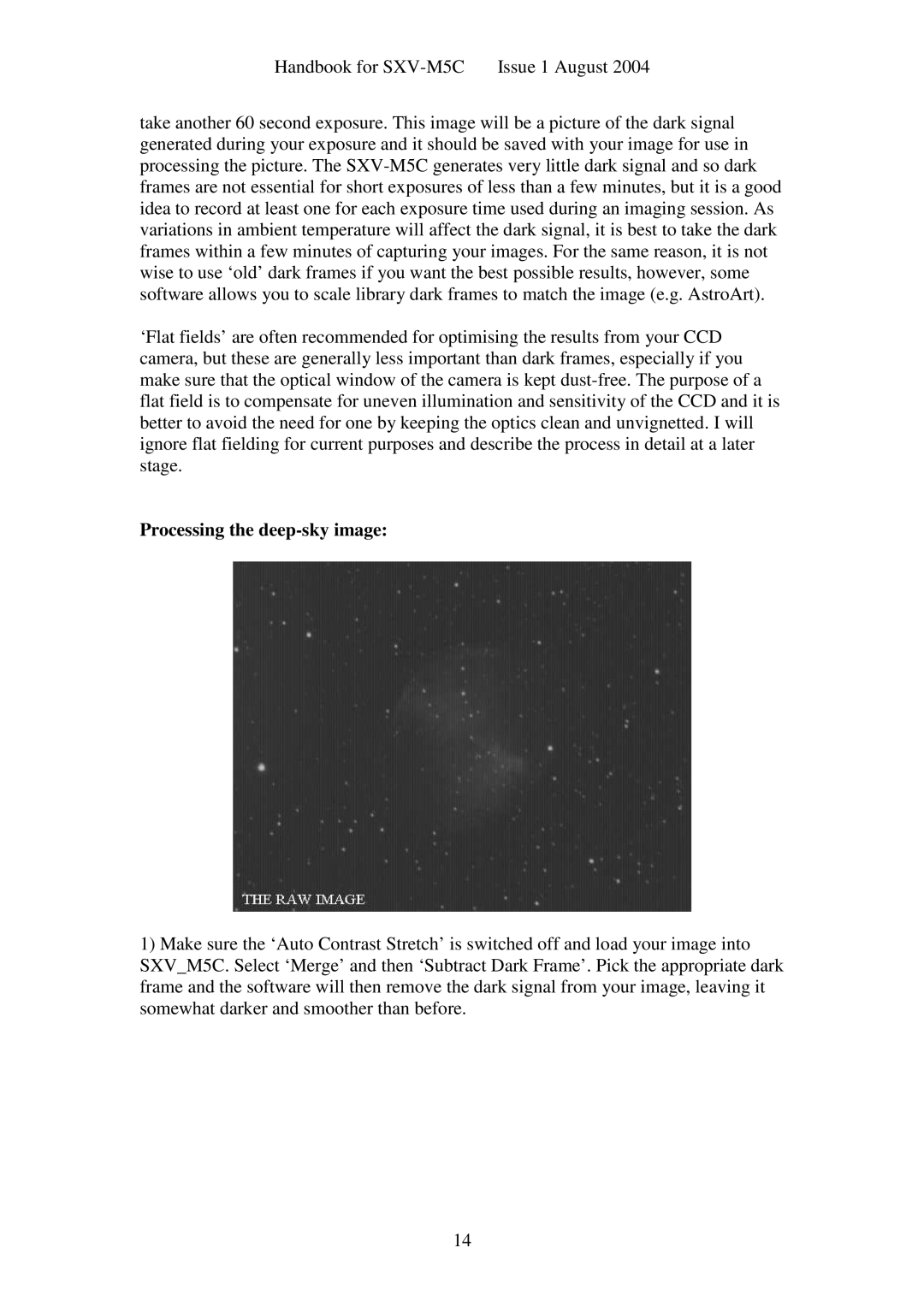
Handbook for SXV-M5C Issue 1 August 2004
take another 60 second exposure. This image will be a picture of the dark signal generated during your exposure and it should be saved with your image for use in processing the picture. The SXV-M5C generates very little dark signal and so dark frames are not essential for short exposures of less than a few minutes, but it is a good idea to record at least one for each exposure time used during an imaging session. As variations in ambient temperature will affect the dark signal, it is best to take the dark frames within a few minutes of capturing your images. For the same reason, it is not wise to use ‘old’ dark frames if you want the best possible results, however, some software allows you to scale library dark frames to match the image (e.g. AstroArt).
‘Flat fields’ are often recommended for optimising the results from your CCD camera, but these are generally less important than dark frames, especially if you make sure that the optical window of the camera is kept dust-free. The purpose of a flat field is to compensate for uneven illumination and sensitivity of the CCD and it is better to avoid the need for one by keeping the optics clean and unvignetted. I will ignore flat fielding for current purposes and describe the process in detail at a later stage.
Processing the deep-sky image:
1)Make sure the ‘Auto Contrast Stretch’ is switche d off and load your image into SXV_M5C. Select ‘Merge’ and then ‘Subtract Dark Fra me’. Pick the appropriate dark frame and the software will then remove the dark signal from your image, leaving it somewhat darker and smoother than before.

